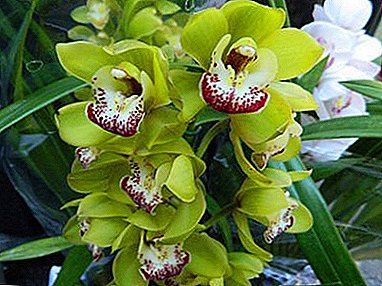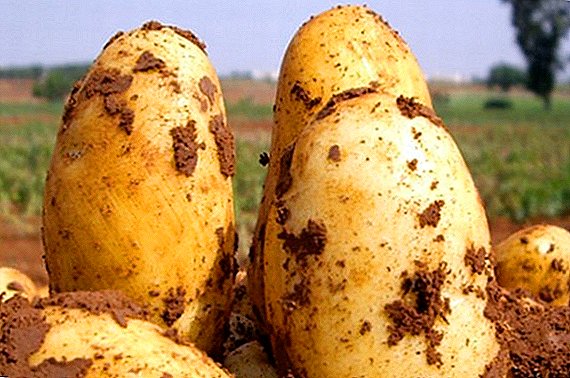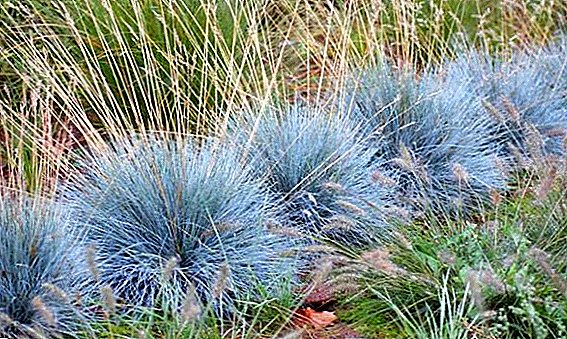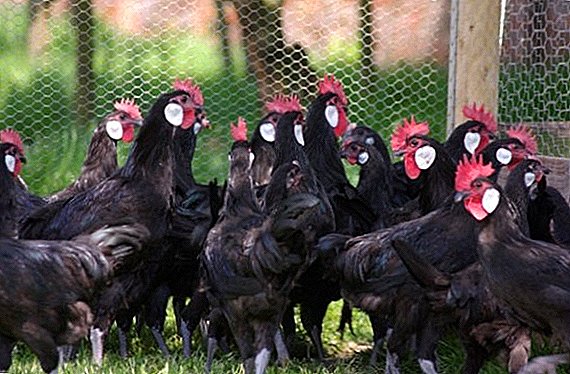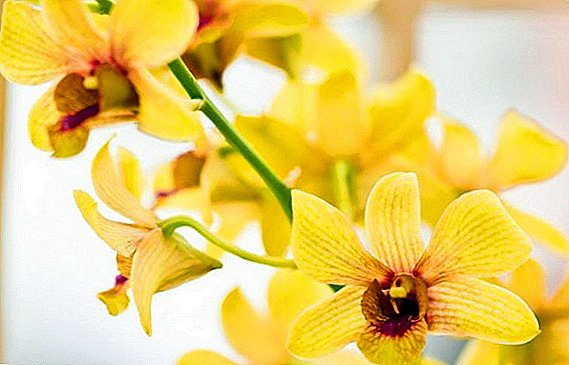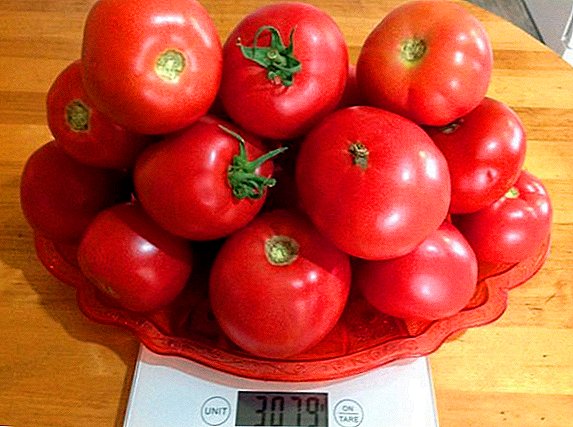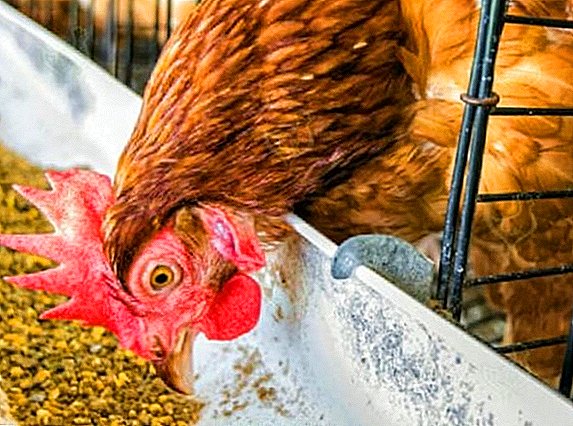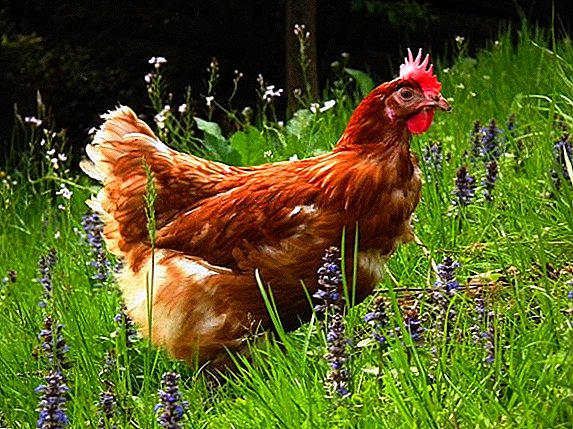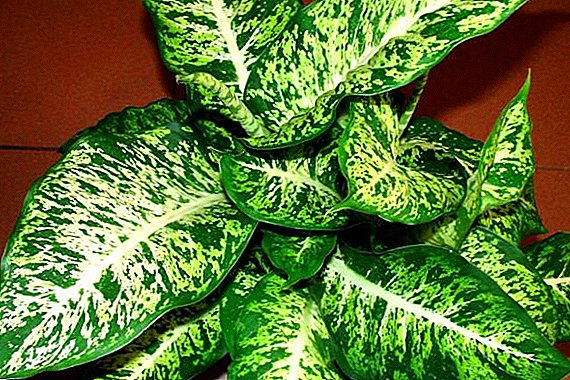 Many growers are not at risk of growing dieffenbachia at home due to the presence of many negative signs associated with this ornamental plant. In addition, not everyone is willing to settle in his house a poisonous flower, which is dieffenbachia. In this article we will consider a brief description of a flower and its chemical composition, we will get acquainted with its useful and harmful properties, and also list the main folk omens associated with this plant.
Many growers are not at risk of growing dieffenbachia at home due to the presence of many negative signs associated with this ornamental plant. In addition, not everyone is willing to settle in his house a poisonous flower, which is dieffenbachia. In this article we will consider a brief description of a flower and its chemical composition, we will get acquainted with its useful and harmful properties, and also list the main folk omens associated with this plant.
What is this plant
Dieffenbachia is home to Central and South America. In the wild, it grows in a tropical climate with high humidity, but due to its decorative appearance it is often grown under room conditions.
Did you know? People called dieffenbachia "dumb rod". The leaves of the flower served as punishment for the disobedient slaves, who lost their voice after eating the leaves of the plant.
Consider the botanical description of dieffenbachia:
- The flower belongs to the family of Aroids and is a perennial evergreen herb.
- Dieffenbachia is growing rapidly and in the wild can reach a height of 2 m.
- Stem Dieffenbachia fleshy, green. As it grows in height, it becomes bare from the bottom, as the lower leaves fall.
- The length of the leaves of the plant depends on the variety and can reach 1 m. In shape, they can be oval, ovoid, wide, etc.
- The color of the leaves also depends on the variety and can be monotonous (green) or variegated (with light stripes and spots). In good growing conditions, new leaves are formed every week.
- In the presence of favorable conditions, dieffenbachia forms buds every spring. Inflorescences have the shape of a cob and consist of small yellow-white flowers. Outside, the ear is covered with a gray-green bract.
- The fruits of dieffenbachia are orange or red berries, which are formed at the site of the inflorescence, if left on the plant after flowering is complete.

Chemical composition of the plant
When growing dieffenbachii need to observe precautions, because its juice is toxic to humans. It is composed of substances that adversely affect the condition of the body and can cause serious poisoning.
The chemical composition of the plant is described below:
- calcium oxalate;
- oxalic acid;
- phytoncides;
- enzymes;
- alkaloids;
- essential oils;
- toxins.
Important! The negative impact of all these components on humans is observed only when the juice of a flower comes into contact with the skin or mucous membranes.
Beneficial features
In addition to the attractive and exotic appearance, Dieffenbachia has other positive qualities. Thanks to them, this flower is recommended to grow in industrial areas with polluted air.
The main advantages of plants include:
- air purification from harmful chemicals (formaldehyde, ammonia, benzene);
- reducing the number of harmful bacteria in the air;
- increased humidity in the room;
- reducing the amount of dust in the air.
Harm and security measures
Despite its advantages, dieffenbachia belongs to dangerous plants and in some cases can cause serious harm to the human or pet body. 
Poisonous plant sap can have such negative effects:
- irritation and burns on contact with open skin;
- loss of speech and swelling of the tongue in contact with the mucous membranes of the oral cavity in adults;
- severe laryngeal edema and difficulty breathing, dizziness and incoordination when hit in the mouth or stomach in children;
- burning and temporary loss of vision when the flower juice comes into the eyes;
- laryngeal edema and choking in domestic animals that bit a stem or leaves of dieffenbachia.
To prevent the occurrence of such negative consequences, it is recommended to observe certain security measures when growing a flower:
- cutting and transplanting a plant should be done with rubber gloves so that its juice does not accidentally hit the skin;
- after any actions with the flower, you need to thoroughly wash your hands with soap;
- if there are small children in the house, the plant is placed in a place inaccessible to them so that the child cannot reach it;
- so that domestic cats and dogs do not bite off the leaves and the stem of a flower, it can be put on a tall closet or hung on the wall.
Did you know? It is noticed that dieffenbachia begins to "cry" in front of heavy rainfall or snowfall. Thus, excess moisture is eliminated from it.
Symptoms of poisoning and first aid
If dieffenbachia juice gets on the skin, mucous membranes of the mouth or in the eyes, then discomfort occurs in a person after 15 minutes. The most serious poisoning can be obtained by swallowing a piece of a leaf or a stem of a flower, therefore, when growing this plant, one should be well aware of the signs of poisoning with its poisonous juice and know how to properly render first aid.
The main symptoms of poisoning are:
- redness and burning of the skin at the site of contact;
- burning, visual disturbances in contact with eyes;
- severe sore throat, dumbness, swelling of the tongue when hit in the mouth;
- dizziness, nausea, painful cramps in the stomach, loss of consciousness when swallowing parts of a plant.

Step-by-step instructions on first aid for poisoning with parts of dieffenbachia are presented below:
- Wash skin on skin thoroughly with soap and warm water.
- If the juice of the flower gets into the eyes, then you need to immediately rinse them under running water for 15-20 minutes. At the same time you need to keep the eyelids open. Then you should consult a doctor.
- If toxic juice accidentally got on the tongue, then you need to rinse your mouth with clean water and drink a solution of activated carbon. When swelling of the larynx is necessary to urgently call a doctor.
- When leaves or parts of the dieffenbachia stem enter the stomach, drink plenty of water to induce vomiting. This procedure is repeated several times in order to clear the stomach of poison.
- If the victim has a loss of consciousness, convulsions or suffocation, it is necessary to immediately call a doctor.
Important! If parts of dieffenbachia enter the stomach, you should not drink milk, since this will only increase the absorption of toxic substances and lead to more severe intoxication of the body.
Omens and superstitions
In addition to the confirmed positive and negative properties of the plant, many popular signs and superstitions are associated with dieffenbachia.
The most common ones are listed below:
- it is believed that the flower can drive men out of the house and provoke quarrels in the family;
- there is a belief that dieffenbachia can prevent single women from finding a life partner and get married successfully;
- it is not recommended to place the plant in the bedroom of a young married couple, since it prevents the appearance of offspring;
- Dieffenbachia is believed to adversely affect the potency of men and reduce sexual desire;
- there is a belief that a plant can only bloom in homes with a large amount of negative energy and is able to absorb it;
- it is recommended to grow dieffenbachia only for women, because with proper care this flower prevents aging, improves the attractiveness and well-being of its owner;
- It is believed that the flower stimulates mental activity and contributes to achieving success in business.
To believe or not to the listed signs is a personal matter. There are many examples of happy families who grow diefenbachia in their home and absolutely do not suffer from the negative superstitions associated with it. But due to the fact that the plant is poisonous, it is not recommended to put it in the nursery or bedroom. It is better to place this flower in the kitchen, in the office or in the part of the room that is intended for study. 
Memo Florist
For normal growth, dieffenbachia needs a certain microclimate and requires simple maintenance.
Consider the main features of growing this plant:
- The minimum allowable temperature in a room with a flower in winter is + 17 ° C. In summer, the room should be + 22 ... + 24 ° С.
- Dieffenbachia needs a lot of light, but she does not like exposure to direct sunlight, so the plant is recommended to put in partial shade.
- The flower reacts poorly to drafts and may begin to shed its leaves.
- Watering is done with moderate amount of settled or rain water as the topsoil dries in the pot. The optimum frequency of watering is every 3-4 days, but it is impossible to re-moisten the soil in a container with a flower.
- To make the ground in the flowerpot better absorb moisture, it is recommended to periodically loosen its upper layer.
- It is recommended every 5-7 days to wipe the leaves of the flower from dust and spray them with water.
Read also about the main diseases of dieffenbachia and their treatment.
- Soil mixture for dieffenbachia should be loose and light, well pass water and air. It is best to buy in the store ready-made soil consisting of hardwood, peat, sand and charcoal.
- Fertilizers need to be applied in the period from late spring to early fall with an interval of 2 weeks. In winter, dieffenbachia is not fed, because during this period it falls into a state of rest. As a top dressing complex fertilizers for decorative leafy plants are used.
- Cutting the flower is carried out after the diameter of the trunk has reached 2 cm, and its lower part has begun to bare. The stem is cut with a sharp knife, treated in alcohol, at a height of 10-12 cm from the ground surface. From the resulting hemp with 3-4 dormant buds grow new shoots, and the cut off top with leaves can be rooted in a separate container.
- Young diefenbachia needs to be replanted 1-2 times a year, and for adults and large specimens it is enough to remove the top layer of soil in the pot and replace it with fresh soil.
- For a flower it is best to use pots made from natural materials - ceramics, bamboo or clay. At the bottom of the tank it is necessary to put a layer of drainage to prevent stagnation of water.

Despite the fact that dieffenbachia belongs to poisonous plants, it can become a decoration of the interior and bring benefits to man. To do this, you need to properly care for her, observe the precautions listed in the article and keep the flower away from children and pets.




